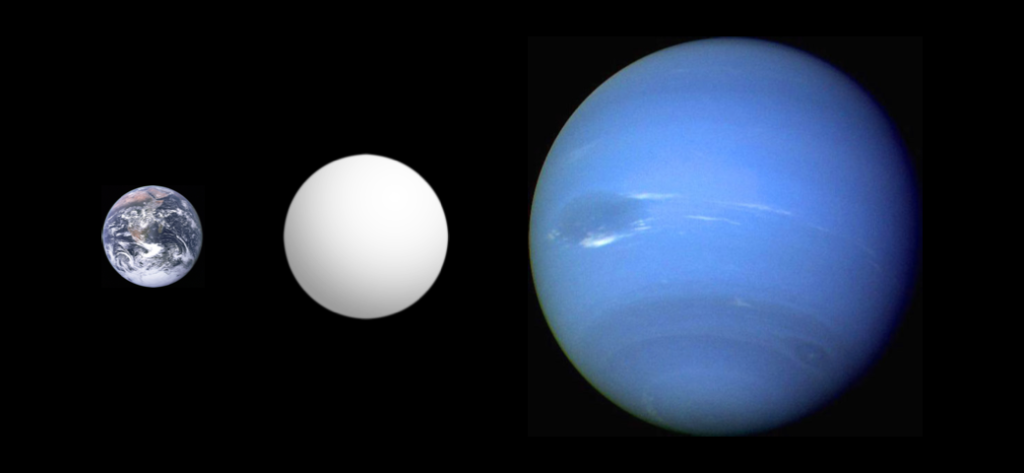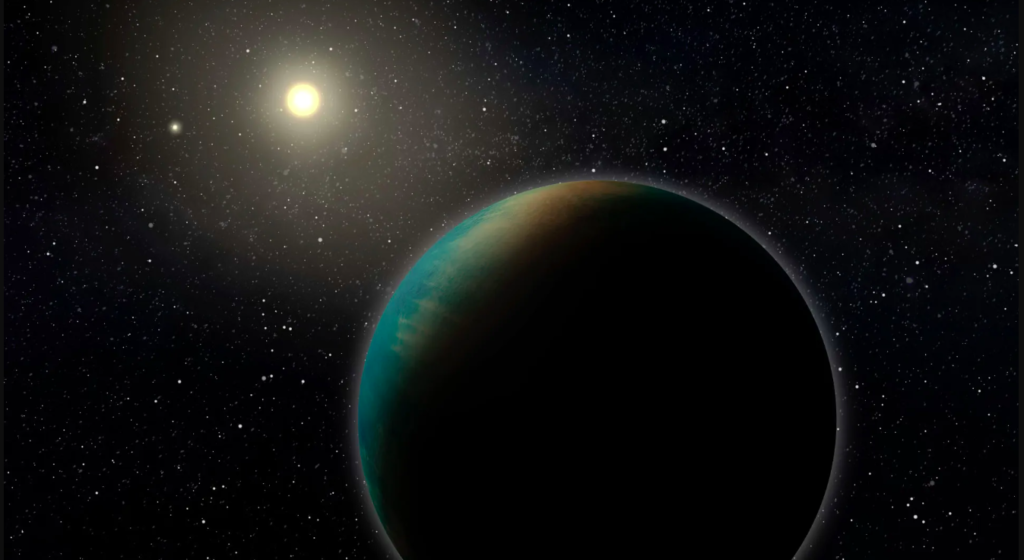Astronomers are finding more of the billions of super-Earths they believe to be out there. Super-Earths are larger, more numerous, and more livable than Earth itself.
Exoplanets are planets that circle stars outside of our solar system and are now often found by astronomers. However, researchers working on NASA’s Transiting Exoplanet Survey Satellite discovered a few unusual planets in the habitable zones of their parent stars in the summer of 2022.
One planet circles its star in less than three days and is 30% bigger than Earth. The other is 70 percent bigger than Earth and may have a deep ocean. Super-Earths, which are more massive than the Earth but smaller than ice giants like Uranus and Neptune, are these two exoplanets.

I’m an astronomy professor who focuses on astrobiology, exoplanets, distant galaxies, and galactic cores. I keep up with the hunt for planets that could support life.
Scientists still believe that life can only exist on Earth and nowhere else in the cosmos. It would make sense to concentrate the search for life on planets that are Earth-like or have characteristics that are similar to Earth. However, studies have revealed that a super-Earth like the ones recently discovered offers scientists the highest chance of discovering life on an extraterrestrial planet.

Common and easy to find
The majority of super-Earths revolve around cool dwarf stars, which have a lower mass and a longer lifespan than the Sun. For every star like the Sun, there are hundreds of cool dwarf stars, and researchers have discovered super-Earths circling 40% of the cold dwarfs they have studied. Using that figure, scientists predict that the Milky Way alone has tens of billions of super-Earths in habitable regions where liquid water can exist. Water is necessary for all life on Earth, hence it is considered essential for habitability.
Super-Earths are the most prevalent form of exoplanet in the Milky Way, according to current calculations, accounting up around one-third of all exoplanets. The distance to the closest is merely six light-years. You might even argue that the lack of a planet between Earth and Neptune in our solar system makes it uncommon.

Super-Earths are also considerably simpler to find and analyze than Earth-sized planets, which makes them excellent candidates in the hunt for extraterrestrial life. Astronomers utilize one of two techniques to find exoplanets. One searches for a planet’s gravitational pull on its parent star, while the other searches for a star’s light briefly dimming when a planet passes in front of it. With a larger planet, both of these detection techniques are simpler.
Super-Earths are super habitable
Earth is the “best of all possible universes,” according to German philosopher Gottfried Wilhelm Leibniz, who made this claim more than 300 years ago. Leibniz’s reasoning sought to explain the existence of evil, while contemporary astrobiologists have investigated a related issue by focusing on what makes a planet habitable to life. It turns out that Earth is not the ideal place that could exist.
The temperature has fluctuated over time from ocean-boiling hot to deep-freeze cold due to variations in the brightness of the Sun and the tectonic activity of the Earth. Most of Earth’s 4.5 billion year existence has been spent as an inhospitable place for humans and other bigger animals. According to simulations, the long-term habitability of Earth was not predetermined but rather a result of chance. Literally, being alive is a blessing for humans.
Researchers have identified a number of characteristics that make a planet particularly favorable for life. Geological activity is more likely to be present on larger planets, which is thought to favor biological evolution. The most livable planet would thus be between 20% and 30% bigger by volume and have nearly twice the mass of Earth. The average temperature would be 77 degrees Fahrenheit, and the waters would be shallow enough for light to encourage life all the way to the seabed (25 degrees Celsius). It would have an atmosphere that is denser than Earth’s and would serve as a protective layer.The planet would also have a powerful magnetic field that shields it from cosmic radiation and would circle a star older than the Sun, which would allow life to form over a longer period of time. These characteristics, in combination, are thought to make a planet extremely livable.
Super-Earths have several characteristics of highly livable planets by definition. Twenty super-Earth exoplanets have been found so far, and while they may not be the finest conceivable worlds, they are potentially more livable than Earth.
There has just been a fascinating addition to the list of livable worlds. Exoplanets that have left their star systems have begun to be found by astronomers, and the Milky Way may contain billions of them. If a super-Earth with a liquid surface and a dense atmosphere gets evicted from its solar system, it may be able to support life for tens of billions of years, considerably longer than Earth could before the Sun dies.

Detecting life on super-Earths
Astronomers will search for biosignatures—byproducts of biology that may be found in a planet’s atmosphere—in order to find life on faraway exoplanets.
The James Webb Space Telescope, operated by NASA, was not ideal for studying exoplanets since it was built before astronomers learned about them. But it can perform some of this research, and in its first year of operation, it will aim for two super-Earths that could be livable. The planets discovered this summer as well as another set of super-Earths with enormous seas identified in the last few years make for appealing targets for James Webb.
The next generation of enormous ground-based telescopes, including the 39-meter Extremely Large Telescope, the 30-meter Telescope, and the 25.4-meter Giant Magellan Telescope, will, nevertheless, have the highest prospects of discovering indications of life in the atmospheres of exoplanets. By the end of the decade, all of these telescopes, which are now under construction, should be gathering data.
Astronomers are aware that life’s essential components are present in the universe, but livable does not imply inhabited. It’s plausible that life on Earth was an exceptional accident until scientists discover proof of life elsewhere in the universe. Even if there are many reasons why a habitable planet wouldn’t show indications of life, if scientists continue to hunt for signs of life on these extremely livable super-Earths over the following years and don’t discover any, people may be compelled to believe that the universe is a lonely place.
This article is republished from The Conversation under a Creative Commons license. Read the original article.
Data suggests the best chance astronomers have of finding life on another planet is likely to be on a super-Earth.
Do not forget to share your opinion with us to provide you with the best posts !




0 Comments